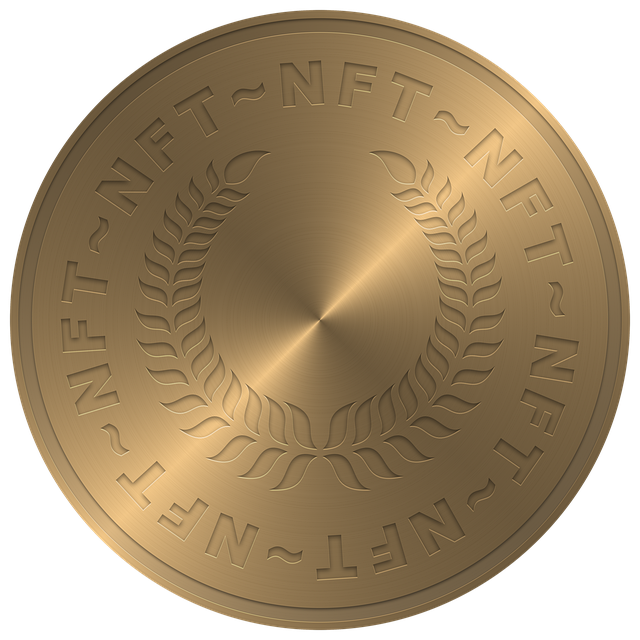What Is the Best AI Crypto Trading Bot for Beginners: Practical Picks, Setup, and Safety Tips
Author: Jameson Richman Expert
Published On: 2025-10-30
Prepared by Jameson Richman and our team of experts with over a decade of experience in cryptocurrency and digital asset analysis. Learn more about us.
What is the best AI crypto trading bot for beginners? This comprehensive guide answers that question by defining what beginner-friendly AI trading bots do, comparing top options, explaining how to choose and set up a bot safely, and sharing risk-management and backtesting best practices. Whether you want a hands-off copy trading experience, an easy DCA/grid bot, or an AI-assisted strategy marketplace, this article gives actionable steps, real examples, and links to resources to get started with confidence.

Why beginners consider AI crypto trading bots
Crypto trading bots automate repetitive tasks and can execute strategies faster and without emotion. For beginners, AI-enhanced bots can offer:
- Simplified decision-making: AI can analyze large datasets and propose trades or parameter settings based on historical patterns.
- Prebuilt strategies: Many platforms offer templates and marketplace strategies built by experienced traders.
- Paper trading & backtesting: Simulate performance before risking real funds.
- 24/7 execution: Crypto markets never sleep — bots monitor positions and act on rules continuously.
However, bots are not a guaranteed profit machine: they require careful setup, monitoring, and risk control. Below we’ll walk through what makes a bot beginner-friendly and which platforms are commonly recommended.
Key features of the best AI crypto trading bot for beginners
When deciding which bot to use, prioritize these features:
- Ease of use: Intuitive dashboard, onboarding guides, and one-click templates.
- Paper trading and demo mode: Essential for testing strategies without risk.
- Backtesting tools: Ability to run historical tests with slippage and commission modeled.
- Prebuilt AI or signal integrations: Machine learning models, signal providers, or pattern recognition tools that assist entry/exit decisions.
- Security: Strong account protection, recommendations for API key permissions (trading only, no withdrawals), and transparent data policy.
- Exchange support: Integration with reputable exchanges where you can get liquidity and low fees.
- Community and support: Active community and responsive support to help beginners.
- Pricing transparency: Clear subscription tiers and trial periods.
Top beginner-friendly AI crypto trading bots (comparative overview)
Below are popular platforms that beginners frequently choose. Each entry highlights AI-related features, pros, cons, and ideal beginner use-cases.
1) Cryptohopper
- Why beginners like it: Marketplace of signalers and templates, strategy designer, and a user-friendly interface.
- AI & signals: Integrates third-party signal providers and supports automated technical indicators; beginners can subscribe to AI or expert signals.
- Pros: Strong community, good backtesting, copy trading, cloud-based (no VPS needed).
- Cons: Costs can add up with premium signals; needs careful signal vetting.
- Best for: Beginners who want copy trading and semi-automated AI signal integration.
2) Mudrex
- Why beginners like it: Visual strategy builder, marketplace of pre-built strategies, and formal backtesting.
- AI & signals: Many strategies use quantitative and ML-informed rules; marketplace strategies are curated and rated.
- Pros: Beginner-friendly marketplace, regulated custody options for certain products, strong backtesting reports.
- Cons: Fees on managed products; not every strategy labeled “AI” uses true ML.
- Best for: Beginners who want to subscribe to proven strategies without coding.
3) 3Commas
- Why beginners like it: SmartTrade terminal, DCA and grid bots, and a large template library.
- AI & signals: Not primarily an ML bot, but supports integrations with signal providers and has automation tools that mimic AI-driven behavior.
- Pros: Strong risk-management tools, wide exchange support, social trading features.
- Cons: Steeper learning curve for advanced features.
- Best for: Beginners ready to learn bot logic and gradually increase automation complexity.
4) Zignaly
- Why beginners like it: Simple copy trading, signal integration, and low-cost access.
- AI & signals: Allows following AI-based signal providers and professional traders.
- Pros: Affordable, easy to use, supports exit strategies and risk controls.
- Cons: Marketplace quality varies; choose signalers carefully.
- Best for: Beginners wanting copy trading with limited setup effort.
5) Coinrule
- Why beginners like it: Rule-based automation via templates and a simple logic builder.
- AI & signals: Primarily rule-based; newer features may incorporate ML insights for recommendations.
- Pros: Excellent UX, many templates, strong educational resources.
- Cons: Advanced traders may find it limiting compared to coded strategies.
- Best for: Complete beginners who want to automate simple strategies quickly.
6) Bitsgap
- Why beginners like it: Demo mode, portfolio management, and arbitrage/grid bots.
- AI & signals: Focuses on automation and algorithmic strategies rather than pure ML models.
- Pros: Strong backtesting, demo exchange environment, arbitrage tools.
- Cons: More technical UI for some features.
- Best for: Beginners who want to learn algorithmic approaches with simulated funds.
For a broader marketplace and platform selection, see a detailed platform guide that reviews popular trading software and how to choose: most popular trading software and how to choose.

Which specific bot is “the best” for beginners?
There’s no single answer — the best AI crypto trading bot for beginners depends on your goals, risk appetite, and how much time you’ll invest learning. That said, a practical approach:
- If you want zero coding and easy copy trading: Zignaly or Cryptohopper (using vetted AI signals).
- If you prefer strategy marketplaces and visual building: Mudrex or Coinrule.
- If you want robust risk controls and exchange breadth: 3Commas.
- If you want to test algorithmic strategies with simulated funds: Bitsgap.
For a curated list of AI trading bot platforms and 2025 picks, review this guide that pools strategies and platform strengths: Best Crypto AI Trading Bot Platform Guide 2025.
How to choose the right bot — a beginner’s checklist
Use the following checklist before committing real funds:
- Does it offer paper trading? Always test with simulated money first.
- Is backtesting realistic? It should include slippage and fees.
- Are strategies transparent? Avoid “black-box” promises of guaranteed returns.
- Which exchanges are supported? Pick an exchange with good liquidity and low fees; check whether the bot supports sub-accounts.
- Security model: Can you restrict API permissions to trading-only? Is withdrawal disabled?
- Cost vs. expected value: Compare subscription fees to historical returns and the option to cancel anytime.
- Community and reviews: Search independent forums and Reddit for user experiences.
Recommended exchanges to use with bots (affiliate links)
Most bots integrate with major exchanges via API keys. For liquidity and bot compatibility, consider registering with one or more of these exchanges (links are provided):
- Binance — high liquidity and many bot integrations. Register here: Binance registration.
- MEXC — supports many altcoins and is popular with bot users: Register at MEXC.
- Bitget — strong derivatives offering and API access: Register at Bitget.
- Bybit — additional derivatives and spot liquidity: Register at Bybit.
Tip: For safety, create exchange sub-accounts for bots where possible and set API keys with trading-only permissions (disable withdrawals).

Step-by-step setup for beginners (quick and safe)
- Choose an exchange and open an account. Use the links above to register and complete KYC if required.
- Fund a small amount. Start small — an amount you can afford to lose while testing.
- Create an API key on the exchange. Give only “trade” permission, not withdrawal. Save the API key and secret securely (do not share).
- Sign up for the bot platform and connect API keys. Follow the platform’s security checklist and confirm IP whitelisting if available.
- Pick a prebuilt strategy or template. For absolute beginners, choose a low-risk DCA or grid template and run it in demo mode first.
- Backtest the strategy. Use historical data and model fees and slippage. Evaluate drawdown and profit factor.
- Paper trade. Run the strategy live with simulated balance to see real-time performance.
- Start live with minimal capital. Use conservative position sizes and daily monitoring for the first weeks.
- Iterate and document. Track performance, tweak rules, and never leave large sums unattended.
If you’re curious about manual trading workflows and platforms like MetaTrader 4, see this step-by-step guide on trading Bitcoin with MetaTrader 4 for strategies and best practices: how to trade Bitcoin on MetaTrader 4. While MT4 is more common for Forex, the guide contains transferable strategy and risk-management lessons.
Practical strategy examples for beginners
Beginner-friendly strategies that many bots support:
- DCA (Dollar-Cost Averaging): Buy small amounts at regular intervals or after price drops to reduce entry risk.
- Grid trading: Place buy/sell orders at fixed intervals above and below a price — benefits in sideways markets.
- Trend-following (moving-average crossover): Enter on crossovers and scale out when momentum slows.
- Copy trading / signal following: Follow vetted traders or AI signal providers; monitor and cap exposure per trader.
Example: a beginner-friendly setup might be a DCA bot on BTC with a maximum position size of 1% of portfolio per DCA interval and a manual stop-loss at 30% drawdown — then adjust after 30 days of observed performance.
Backtesting, metrics, and realistic expectations
When evaluating a bot or strategy, focus on:
- Net profit and ROI over multiple market cycles.
- Maximum drawdown — worst observed peak-to-trough loss.
- Sharpe ratio / risk-adjusted return where available.
- Win rate and profit factor (gross profits / gross losses).
- Number of trades — low sample sizes are unreliable.
Backtesting must include realistic slippage, exchange fees, and periodic rebalancing. For formal definitions and background on algorithmic trading and backtesting, see Wikipedia’s helpful pages on algorithmic trading and artificial intelligence, and this Investopedia article on automated trading systems: automated trading.

Security and risk controls — do this before you trade
- Use trading-only API keys: Never give bots withdrawal rights.
- Enable two-factor authentication (2FA): On both exchange and bot accounts.
- Start with sub-accounts: Many exchanges allow isolated trading sub-accounts for bots.
- Limit position sizes: Use conservative risk limits (1–2% of portfolio per trade for beginners).
- Withdraw profits: Regularly move excess funds to cold storage.
- Check platform reputation: Search for audits, security incident history, and user reviews.
Common beginner mistakes and how to avoid them
- Blindly trusting “black-box AI” claims: Ask for historical strategy reports and transparent logic.
- Using real funds without paper testing: Always run at least several weeks of paper trading.
- Overleveraging: Avoid margin or high leverage until you understand how the bot behaves across volatile moves.
- Not monitoring live trades: Bots can malfunction or markets can change — check daily.
- Ignoring fees and slippage: They erode small profits quickly.
Legal, tax, and regulatory considerations
Bot trading may be subject to local regulations and taxation. Many jurisdictions require reporting of crypto gains. If you are in the U.S., the IRS provides guidance on virtual currency transactions: IRS virtual currency FAQs. Consult a tax professional in your jurisdiction for personalized advice. Regulatory rules vary widely: institutional features (derivatives, margin) are often restricted in some countries.

Further reading and advanced next steps
After you’ve grown comfortable with basic automation, explore:
- Building custom strategies with Python using historical data and ML libraries (for advanced users).
- Using replicated strategies from vetted traders in strategy marketplaces.
- Expanding to multi-exchange arbitrage or market-making with deeper technical testing.
For a deep dive into platform picks and strategies for 2025, consult this AI bot platform guide: Best Crypto AI Trading Bot Platform Guide 2025.
Frequently asked questions (FAQ)
Q: Can an AI bot guarantee profits?
No. While AI can improve decision-making and identify patterns, markets are inherently uncertain. Never treat any bot as a guaranteed income source.
Q: How much capital do I need to start with a bot?
You can begin with as little as $50–$200 to learn, but meaningful statistical results generally require larger sample sizes. Use low capital while testing in live mode.
Q: Are bots legal?
Automated trading is legal in most jurisdictions, but regulations vary by country and exchange. Avoid bots that break exchange terms or local laws.
Q: Will a bot work in bear markets?
Some strategies (e.g., mean reversion or grid) may struggle in trending bear markets. Choose or adapt strategies with market conditions in mind and use stop-loss rules.
Conclusion — practical answer to the keyword
So, what is the best AI crypto trading bot for beginners? The best choice depends on your objective and risk tolerance. For many beginners seeking a low-friction start, platforms like Cryptohopper (for AI signals and copy trading), Mudrex (for curated strategy marketplaces and backtesting), or Zignaly (for simple copy trading) are excellent starting points. If you’d rather own and customize your strategies, 3Commas and Bitsgap provide more control and advanced features.
Whatever you choose, follow the checklist: paper trade first, use trading-only API keys, start small, and track performance. Use the platform reviews and guides linked above to compare features and stay informed. For educational background on trading platforms and software choices, read this guide on choosing trading software: most popular trading software. If you want to broaden your trading skills beyond bots — for example, to manual strategies on platforms like MetaTrader — consult this practical guide to trading Bitcoin on MetaTrader 4: how to trade Bitcoin on MetaTrader 4.
Ready to start experimenting? Open an exchange account using the links below to connect a bot with minimal friction:
- Binance registration: https://accounts.binance.info/en/register?ref=12093552
- MEXC registration: https://www.mexc.co/invite/customer-register?inviteCode=mexc-1bE4c
- Bitget registration: https://www.bitget.com/referral/register?clacCode=WSVEGD6H&from=%2Fevents%2Freferral-all-program&source=events&utmSource=PremierInviter
- Bybit registration: https://www.bybit.com/invite?ref=Q8QKORN
Final reminder: treat bots as tools, not magic. Combine careful testing, disciplined risk controls, and continuous learning to increase your odds of long-term success.